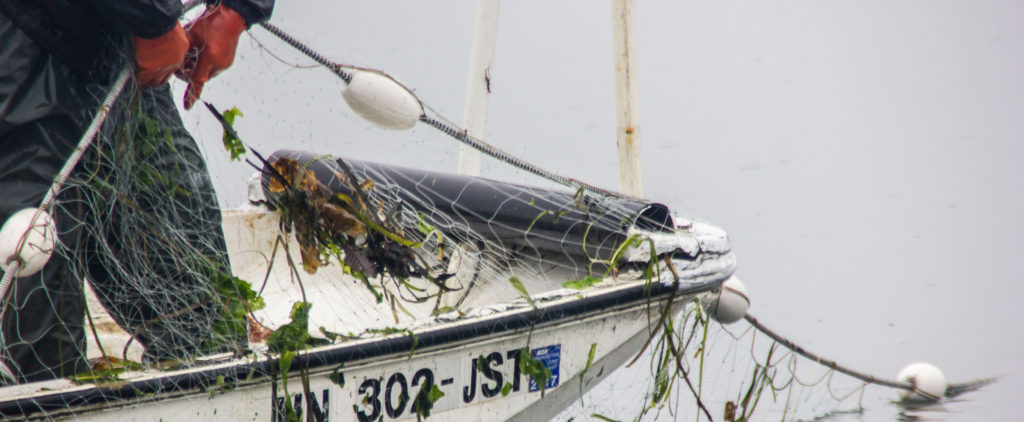
JST fisherman gill netting
As natural resources co-managers, the Treaty Council has worked with its member tribes, other treaty tribes and the State of Washington for decades to manage fisheries and hatcheries in a manner that considers the needs of both people and fish, while ensuring that harvest management plans and fisheries are consistent with salmon protection and recovery efforts.
A commitment to habitat protection and restoration is also essential for success in restoring salmon populations to healthy levels. In addition to salmon fisheries management activities the Treaty Council is also involved in the co-management of halibut, rockfish, and herring resources, including participation in the International Pacific Halibut Commission (IPHC) and the development of treaty tribal halibut fishery management plans.
The Treaty Council’s finfish staff work together with our tribes and other programs as part of an integrated fisheries management program. The tribes believe that cooperative fisheries management and recovery can work together to achieve the common goal of protecting, restoring, and enhancing productivity, abundance and diversity of finfish and their ecosystems.
The Finfish Program focuses on several aspects of fisheries management vital to upholding treaty rights:
Fisheries Policy and Technical Support
The Treaty Council provides policy and technical support to its member tribes during fishery management planning processes, including the Pacific Salmon Commission, Pacific Management Council and “North of Falcon” fishery management forums. Treaty Council staff also supports regional fisheries management processes by serving on technical committees and performing technical work such as developing abundance forecasts, fishery model inputs, fish stock assessments and management options for Puget Sound fisheries.
Harvest Regulation
The Treaty Council issues pre-season and in-season/emergency regulations for the In-Common Harvest Areas (specifying allowed gear, management periods and fishing schedules). Additionally, the Treaty Council reviews the regulations of other non-member tribes for consistency with PNPTC regulations to ensure management coordination within the In-Common Harvest Areas.
Harvest Monitoring and Catch Accounting
The Treaty Council coordinates the efforts of the member tribes who monitor harvest rates and collect, maintain and distribute the harvest information necessary to accurately management tribal resources. The Treaty Council also coordinates and ensures the compatibility of tribal catch reporting systems, as well as reporting protocols and accuracy standards.
Resource Recovery
The Treaty Council ensures that the tribes address the federal Endangered Species Act and salmon recovery issues, and supports the tribes in their decisions and involvement with these issues. For example, Treaty Council staff was directly involved in developing the Hood Canal Summer Chum and Puget Sound Chinook Plans.
Hatcheries
The Treaty Council ensures that its member tribes’ hatchery-related interests are met by participating in local (treaty area) and regional (Puget Sound) hatchery planning actions involving other tribes, Washington State, the federal government and others.